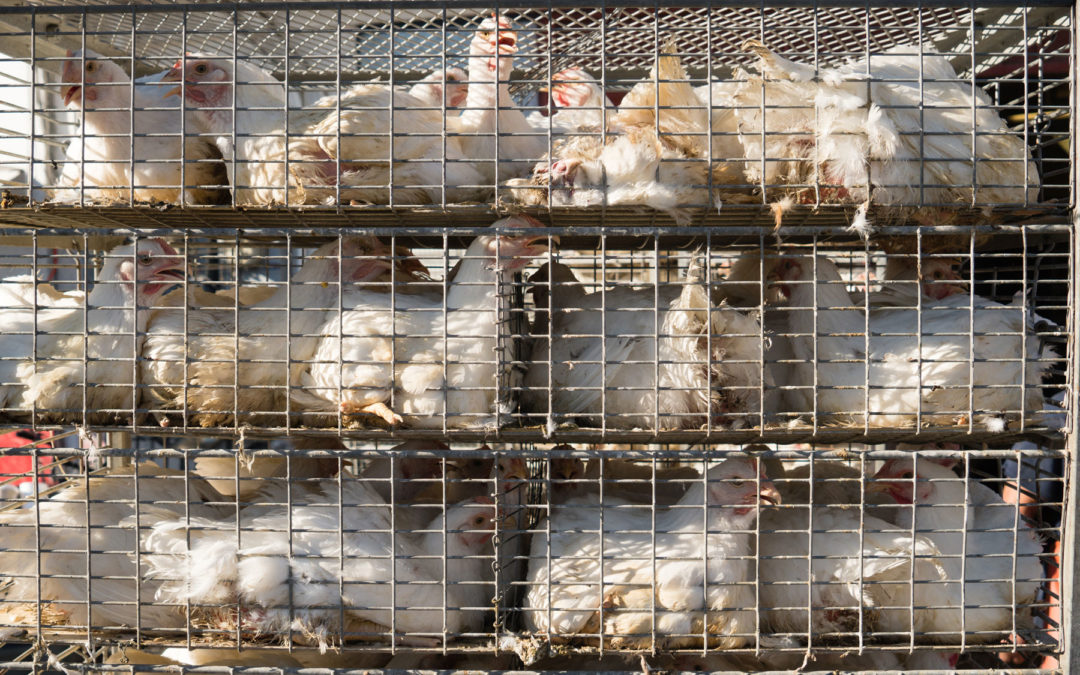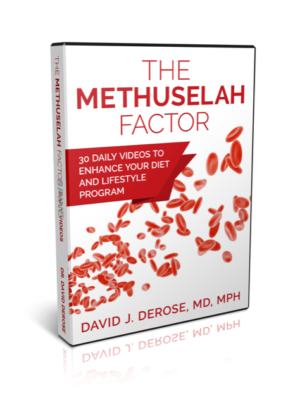Bird Flu and Influenza Pandemics
By David J. DeRose, MD, MPH
Prepared for the Three Angels Broadcasting Network’s “Health for a Lifetime”
Taped December 2005
Overview
For centuries, humans in temperate zones have witnessed a consistent cycle: very few problems with influenza (“flu”) during the summer months followed by a surge in flu cases come winter. When these outbreaks occur in a more localized area, they are referred to as epidemics. However, if there is a dramatic worldwide surge in cases the term “pandemic” is used. The recent concerns about avian flu—and corresponding U.S. federal response plans—have led some to think that flu pandemics are only of recent interest. However, health historians find evidence of such global influenza outbreaks dating back to as early as 1580. By answering a number of important questions, this article some basic facts about influenza, avian flu, and flu pandemics.
Q. Many people act like they know what the flu is. Nonetheless, I hear lay people labeling all kinds of illnesses as the flu—what is true influenza really like?
A. Influenza can cause a variety of symptoms. However, among the most common are rapid onset of high fever and cough. Sore throat, headache, and intestinal symptoms can also occur.
Q. For many vaccine-preventable diseases it seems like we only need one or two shots for our entire life to be fully protected. Why do experts tell people to get a flu shot every year?
A. Unlike most viruses, the influenza virus continues to change. It is subject to both relatively small “drifts” in structure as well as major “shifts” in its composition. Any of these changes renders previous immunity less effective to varying degrees.
Q. Is it important to understand this talk about “drift” and “shift”?
A. It is helpful to understand the practical implications of these terms. Immunity to previous flu strains carries over somewhat and gives us some help in dealing with a new influenza strain that has arisen due to drift. However, a greater change in the influenza type (caused by a shift in structure) leaves most people largely defenseless in terms of immunity.
Q. How dangerous is influenza?
A. The danger of influenza depends on the variant or strain of the virus that causes the illness. Variants that arise due to drift cause epidemics with serious illness and deaths predominantly among those with weaker immune systems (e.g., the very old and the very young). However, when a major shift in flu virus composition occurs, influenza rapidly spreads across the globe as humans generally lack any effective immunity to the new form. These pandemic strains of influenza tend to occur roughly every 30 years and cause large number of casualties—even among those in the prime of life.
Q. How does influenza kill people?
A. The common strains of influenza typically cause death from severe pneumonia. Pandemic flu strains also kill large numbers of healthy people through a condition called Acute Respiratory Distress Syndrome. In this scenario, the body’s immune system responds so aggressively to the virus that the lungs receive serious damage.
Q What is this bird flu we are hearing so much about?
A. Bird flu (or more technically “avian influenza virus”) refers to flu viruses found primarily in birds. However, certain of these viruses can also infect humans. The current avian influenza that has been garnering headlines has a very different composition than human flu viruses active worldwide. Because of its radically different structure, it is particularly deadly for humans, with some 50% of cases thus far succumbing to the disease.
Q. If the current bird flu is so bad, why have so few people contracted the disease?
A. Fortunately, the current strain of avian influenza is very difficult to transmit to humans. As of December 2005 (when we recorded the 3 ABN Health for a Lifetime segment), fewer than 200 known human cases had occurred worldwide. These cases had been generally limited to people in very close proximity to birds, such as poultry farmers. There were a few isolated cases of the virus being passed from one ill person to another. However, the current bird flu virus strain does not give evidence of any potential to cause widespread human disease.
Q. If the current bird flu stain cannot cause widespread disease, then why is there such worry about a pandemic?
A. The big concern is that the bird flu virus currently circulating will change genetically into a form that can readily spread from human to human. This appears to be a frequent phenomenon as influenza viruses periodically move from non-human hosts to the human population. One specific concern is that the current bird flu virus may infect pigs which are also susceptible to human influenza strains. If both influenza strains infect the same pigs at the same time, genetic rearrangement could occur which would allow for the development of a bird flu strain that could readily pass between humans.
Q. What does this term “H5N1” refer to in connection with the bird flu?
A. Scientists describe influenza in terms of certain proteins on the virus surface. H stands for hemagglutinin and N for neuraminidase. These H and N factors have roles in influenza’s infectivity and activity. Each has a number of variants. Specifically, we know of 16 H types and 9 N types. Theoretically, influenza viruses can have a multitude of combinations featuring different H and N factors. However, only three subtypes are currently circulating in human populations: H1N1, H1N2, and H3N2. The current bird flu variant is H5N1. This designation indicates its dramatically different structure—and underscores why our immune systems are so unprepared to cope with it.
Q. Do we have a vaccine for bird flu?
A. At the time of our 3ABN program (December 2005) there was no human vaccine yet available for the bird flu. Because the current virus can be transmitted between humans, there is little motivation for companies to develop a vaccine to the current strain. If the virus morphs into a form that can afflict humans, a vaccine could then be developed. Unfortunately, vaccine development is a slow process, often taking many months.
Q. What can we do if an H5N1 virus goes from a strain that predominantly afflicts birds to one that can readily be passed from human to human?
A. There are three basic strategies that can be employed. First, take steps to prevent becoming infected with influenza. Second, keep your immune system strong so that even if you do become infected, you are less likely to develop a serious illness. Third, utilize specific agents—man made and natural—to treat the flu.
Q. What can I do to prevent becoming infected with avian flu?
A. As already pointed out, there is no vaccine available yet, so immunization is not yet an option. However, hygienic practices have great value. If flu is active in your area, avoid places where people congregate. This may mean missing work, avoiding school, or canceling flights. Research indicates a single traveler with influenza can cough and breathe out so many influenza viruses in a 4.5 hour flight that 70-75% of passengers would be likely to become infected.
Q. Can other hygienic practices make a difference?
A. Yes, be compulsive about hand washing. If your hands have been contaminated with the virus, you can get the flu from touching your eyes or nose. Therefore, it is especially important to avoid touching your face unless you have just washed your hands—or used an effective waterless cleanser.
Q. Can a healthy immune system really make a difference?
A. Yes. Even if you contract influenza, a strong immune system can put the virus in check before it causes serious problems. Many people with strong immune systems think they never get the flu, but actually they do become infected with the virus. However, they develop “inapparent infections” and feel essentially fine (or perhaps like they are “fighting something”). Note: unfortunately, individuals with inapparent infections can transmit the virus to others.
Q. What then can I do to keep my immune system healthy?
A. Some basic strategies include: eating a plant-rich, balanced diet, exercising regularly (but avoiding immune-weakening overexercise), getting sufficient sleep at regular hours, quitting smoking, and keeping stress levels as low as possible.
Q. Are there other things natural things I can do to limit flu severity?
A. Yes. Get serious about a total program of health. We know influenza is more likely to be serious among those with underlying preventable diseases like emphysema, diabetes, and congestive heart failure. Therefore if you are a smoker, stop smoking, maintain a normal weight, address any cholesterol or high blood pressure problems, etc.
Q. Are there drugs available for bird flu?
A. Of the currently available anti-flu drugs, only two appear to be options if we run up against an avian flu pandemic. The older drugs are known as M2 inhibitors and include amantadine and rimantadine. Although effective for preventing influenza outbreaks in close communities (like nursing homes), resistance rapidly develops if used for treatment of old cases simultaneously with preventing new cases. Therefore these drugs appear to be of little help in pandemic situations.
Relenza (zanamivir, an inhaled drug), and Tamiflu (oseltamivir, taken orally) are newer agents known as neuraminidase inhibitors. Resistance has not appeared to be as much of a problem with these drugs as the older M2 agents. However, there is evidence of resistance developing to these drugs as well. Consequently, viewing them as influenza wonder drugs is probably not justified.
Q. Will the regular influenza vaccine provide any help whatsoever in dealing with an H5N1 pandemic?
A. Some experts think the standard flu vaccine is still a good idea. The vaccine will prevent other strains of the flu and may therefore protect you from becoming simultaneously infected with H5N1 and another flu strain. Although not likely to provide significant protection, the regular flu vaccine may still provide some cross-over protection for a pandemic avian strain. Additionally, in a pandemic situation, if you are vaccinated for other flu varieties and still develop the flu, it will lead your doctors to give more prompt attention to the avian variant (vaccine-preventable influenza will be less likely.)
Q. Can’t I get the flu from the vaccine?
A. Because the injectable flu vaccine is an inactivated virus vaccine (made from only parts of the virus), it is not possible to get the flu from it. However, many people have come down with flu-like symptoms following the vaccine. There are at least three reasons for this. First, by activating your immune system, any vaccine can trigger flu-like symptoms including malaise, fatigue, and fever. Second, the vaccine will not protect you if you have recently been exposed to influenza. In other words, if you wait until flu is rampant in your community before getting the shot, you may already have been exposed and infected. The virus may already be multiplying in your body, but you still don’t feel sick. When you come down with full blown flu symptoms the next day, you erroneously blame the vaccine. Third, even if you have not been exposed to the flu, a cruel irony can occur. You can actually become exposed to the flu when you go into the clinic for the vaccine.




